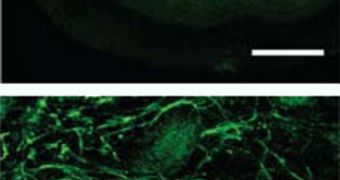A team of investigators at the Stanford University has recently demonstrated that it is entirely possible to stop or activate the feeling of pain in the body of test mice, using nothing more than a beam of light.
This is just the latest advancement in the field of optogenetics, which centers around using light, including lasers, to control a variety of responses and mechanisms in the body of animals or humans.
If these results can be translated in humans, then doctors may soon have access to new ways of treating patients suffering from chronic pain. There are several conditions that have this type of pain as a side-effect. Neuropathies are also very painful, so any new development in this field will be well received.
The Stanford team now plans to conduct an additional series of investigations to determine how and if these findings can be translated on humans. Though mice's pain response is very similar to our own, it is definitely not identical, and also not as complex, Technology Review reports.
Researchers at the university carried out the new study together with a Palo Alto, California-based biotechnology startup company called Circuit Therapeutics. “Patients could be given their own ability to create a pain block on demand,” says the company CSO, neurosurgeon Michale Kaplitt.
Optogenetics is a relatively new field of science. It relies on modifying the DNA of targeted cells – in muscles, the brain, the heart and so on – so that the latter become responsive to light emitted at a particular wavelength. Whenever that light hits the changed cells, it activates or inactivates them.
This approach to treating various conditions was first developed in the lab of researcher Karl Deisseroth, just 9 years ago. The expert is a co-founder of Circuit Therapeutics, and one of the authors on the new study.
The company is also contemplating the creation of a hand-held light-emitting device that would act on nociceptors. These are pain receptors located just under the first layer of human skin, and that play a role in sensing heat, pressure and so on.
“We have engineers thinking about what that kind of device would look like. Pain is a perception. So the idea is to stop the perception of it,” Kaplitt explains.

 14 DAY TRIAL //
14 DAY TRIAL //